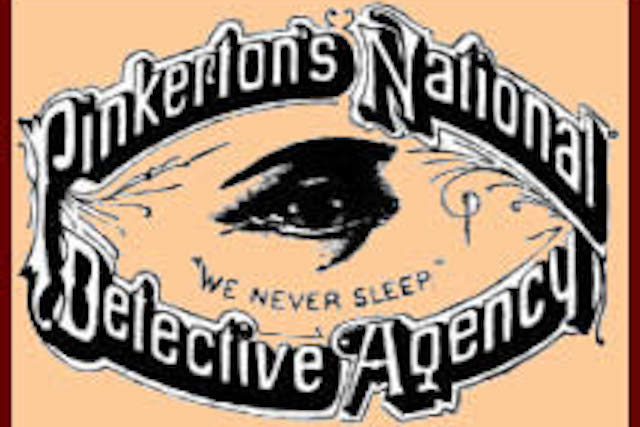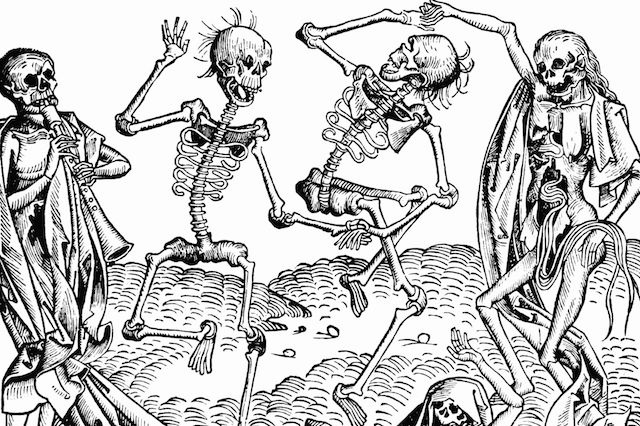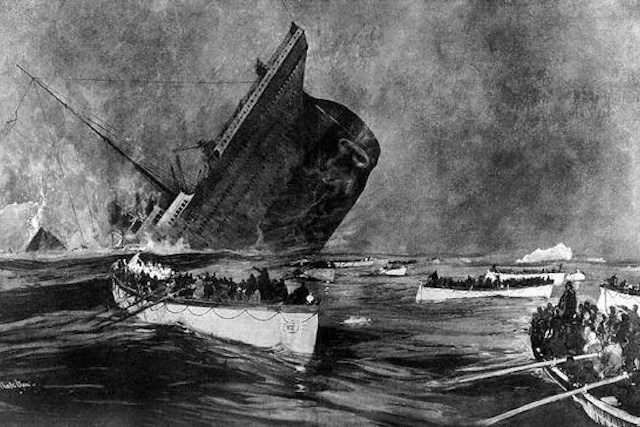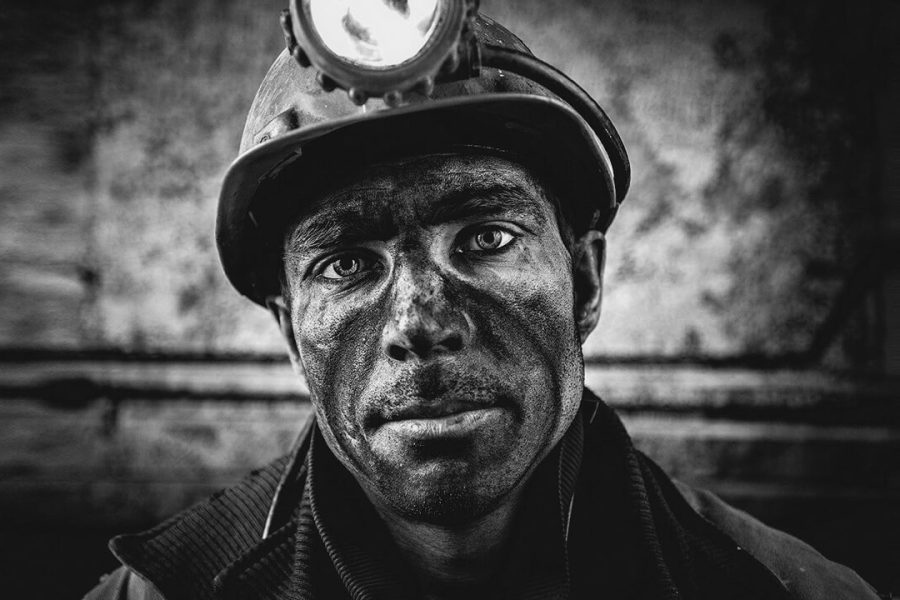Humans like to break reality into time fragments that we think of as the past, present, and future. The present is always the hardest to hold on to because it constantly becomes the past, and the future comes here and then becomes the past before we even know what happened. When we think of the world in these terms, we sometimes lose sight of what still exists in the here and now, not just in the past, although it is often thought of that way. For example, here are 10 things that most people consider relics of a bygone era that still exist today.
10. Pinkertons

If you're a fan of Western movies, you may be familiar with the Pinkertons, the 1850s detective agency made famous by its founder, Allan Pinkerton, who apparently foiled a plot to assassinate President Lincoln. These days, they may be best known for their involvement in the game Red Dead Redemption, which introduced a whole new generation to the old detectives. In fact, the company wasn't impressed with the game's time in the spotlight and actually filed a lawsuit against Rockstar Games, which later refused .
While the criminals in the movies always eluded the Pinkertons who were hot on their trail, another thing that managed to elude them was time. Despite their strong ties to the Wild West, the Pinkertons not only survived that time period, but they still exist today. pore You can hire Pinkertons for workplace violence prevention, event protection, risk consulting and more.
9. Black Death

If there’s one thing we’re all too familiar with these days, it’s a pandemic. We’ve had one, we’re still having one, we’re just apparently less worried about it a couple of years later. And that gives some interesting insight into how humans cope with illness. Two years of Covid-19 has been enough. We all want to move on. So it’s a little surprising to hear that the oldest plague on record, the Black Death, is still doing its thing.
The Black Death, also known as the bubonic plague, killed about 25 million people back in the 14th century, which at the time constituted a significant portion of the world's population. Although much less common today, about 7 Americans people get the plague every year. There was even a plague epidemic in Los Angeles in 1924.
In 2020, a man in New Mexico died of the plague , and another case originated in California. So not only is it still around, it's still killing. Between 2010 and 2015, more than 3,200 cases and nearly 600 deaths were reported worldwide.
8. Confederation

America once went to war with itself, and two armies, the Union and the Confederacy, fought it out from 1861 to 1865. The Confederacy lost, which is why the country is still called the United States, not the Confederate States. But that didn’t stop some people from really holding on to the dream, which is why too many people still fly Confederate flags or otherwise honor the losing side in one of the few but widespread ways in which people honor losers.
While the Confederacy has a handful of fans in the South, if you go much further south you'll find far more ardent supporters. City Americana in Brazil was founded in 1865 after 10,000 Confederates fled the country rather than face the loss of the United States. To preserve their southern, Confederate way of life, they founded a new city in Brazil, where to this day Confederates celebrate their Confederate heritage and fly the Confederate flag.
The Emperor of Brazil paid for the move, hoping to take advantage of southern farmers and make Brazil an agricultural powerhouse like the U.S. The plan failed, but some people stayed, and their descendants celebrate their heritage to this day.
7. The world's first film company

Although film cameras have been around since the 1830s, the very first commercial film ever shown on screen was shown in French cafe in 1895 It was the same year that the Gaumont film company was founded, first existing film company , which started a revolution in entertainment and storytelling, moving from silent black-and-white stories about Nosferatu to films about killer pants and multiple Spider-Man rescues. world.
Gaumont exists and today. The company was known for producing a number of Hitchcock's early films, and in recent years has produced films such as Leon: The Professional" , "The Fifth Element" and the series "Hannibal".
6. The shipyard that built "Titanic"

Harland and Wolff is by no means a household name for most people. You'd probably have to Google it to find out what the company even does. If you did, you might find their website , where they detail their current business dealings, including a heavy focus on things like wind and tidal power. So they're an alternative energy company, right? Or an engineering firm? Maybe. But that's not their main claim to fame. Harland and Wolff built Titanic .
In the early 2000s, the Belfast shipyard was known primarily as a shipbuilding company. Their entire business was building ships back in 2003. Then they started to switch, and by 2011 75% business came from marine renewable energy sources.
5. The company that produced Zyklon B

During the Holocaust, the Nazis killed more than a million people using a poison gas known as Zyklon B. Bruno Tesch owned a company that manufactured Zyklon-B, originally intended for use as a pesticide, and knowingly sold it to the Nazis for use on humans. He was executed for his crimes. However, the company lived on.
First known as Degesch, then Degussa, and today Children Degesch , the company still produces pesticides. It operates in Germany, but also has international subsidiaries, including one in the U.S. Zyklon-B itself is actually sold by some companies under the brand name Cyanosil, Cymag and Cyclon .
In case you were wondering, gas can still be used to kill. The state of Arizona executed Frank Atwood in June 2023. He was offered a choice between lethal injection or hydrogen cyanide. He chose the injections.
4. KGB

If you watch a lot of 80's movies or Very strange things", you know the KGB was a reliable villain of that era. Hell, they still appear in a lot of movies, but they're just called "ex-KGB." Vladimir Putin is a former KGB officer, so it's easy to see why they're the go-to bad guys for some people.
It is commonly believed that the KGB, the state police of the Soviet Union, ceased to exist in 1991 along with the rest of the Soviet Union. But that is not entirely true. As its name suggests, the Soviet Union was more than just Russia, and while there is no KGB in Russia today, at least not by that name or supposed function, that does not mean that no one has one. In Belarus The KGB never went anywhere. In 2022, it became known that the Belarusian KGB had “liquidated » a Ukrainian spy network in the country.
The same can be said about Republic of South Ossetia , which also clings to old ways. In fact, they both continue to have police forces under the same name, rather than at least pretending that they are different organizations.
3. Flea circuses
Flea circuses are very much a thing of a bygone era, and very few people today have probably ever seen one, even if they know what it is. The name is not the trick, the idea here was that someone gathered fleas together and made them do tricks in a replica of a tiny circus.
The concept is much older than you might think, dating back to the 1500s. Watchmakers, known for their ability to make precise but tiny gears and metal parts, used flea circuses primarily as a marketing tool. In one story, a watchmaker made a tiny chain out of gold and put it on a flea to make it pull a small chariot .
While most flea circuses were simply stunts powered by tiny machines and magnets, some were anything but. In the 1800s, Louis Bertolotto allegedly re-enacted Napoleon's Battle of at Waterloo with more than 400 fleas in military uniform. At Oktoberfest in Munich performs a real flea circus .
Fleas, of course, cannot be taught real tricks, but they are predictable and can be tamed. They can jump at the very least 50 times taller than their height. One source claims that their strength is also comparable to that of a person towing a two elephants For these reasons, if you can contain them, they can jump and carry things that the crowd could see with the naked eye, even if the fleas themselves were almost invisible from a distance.
2. Giant otters
Every now and then, if you spend enough time on social media, a video of an otter will undoubtedly cross your timeline. People love otters, and in some parts of the world, they have become popular pets. They look like aquatic cats with arms, so you can imagine the cuteness. Now imagine 6 feet long , which can fight a caiman , a species closely related to crocodiles and alligators. If that sounds prehistoric to you, you're not entirely wrong. Giant otters exist in the world right now.
Although they are endangered, if you go to Brazil, you can find them in various river systems such as the Amazon or La Plata. Weighing up to 75 pounds apiece, they are the only otter species that also hunt in packs, from six to eight of them make their way through the dim rivers at sunset.
1. Thomas Edison's Last Breath

We've seen many things that have somehow held on as grim death despite the passage of time, but this is certainly the most unexpected of all, because death really was supposed to be the end of everything back in 1931 when Thomas Edison took his last breath.
The now popular story about Edison's last breath was that Henry Ford wanted this. Real breath escaping from the lips of a dying man. Why? Well, Ford and Edison were good friends in life, and Edison was something of a personal hero to the younger man. They admired each other professionally, and Edison was very encouraging of Ford's automobile designs.
As Edison lay dying, Ford asked his son Charlie to wait with the man with a test tube and, when the moment came, capture his dying breath in the tube and seal it. This is something the friends apparently did back in the 1930s. Rumors swirled that Ford, a man with a confusing set of spiritual beliefs, may have been trying to capture Edison's soul to bring him back to life.
The real story is very similar, but less mind-blowing. Edison's son said that when his father died, there were test tubes in the room, and he asked the doctor to seal them with paraffin. So maybe some of his dying breath was in those tubes. But there were eight of them, too, and Ford got one. It's on display in Henry Ford Museum , potentially with a little of Edison's soul intact. The fact that Edison's estate contained 42 test tubes labeled "Edison's last breath" is only a small problem.













Оставить Комментарий